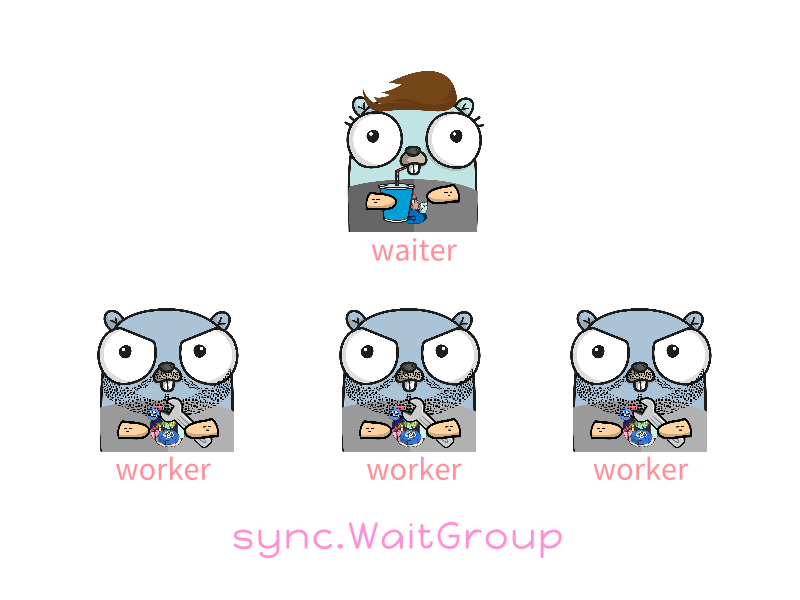1
2
3
4
5
6
7
8
9
10
11
12
13
14
15
16
17
18
19
20
21
22
23
24
25
26
27
28
29
30
31
32
33
34
35
36
37
38
39
40
41
42
43
|
package main
import (
"fmt"
"net/http"
"sync"
)
func main() {
var wg sync.WaitGroup
var urls []string = []string{
"http://baidu.com/",
"https://wzapi.myzx.cn/",
}
wg.Add(len(urls))
for _, url := range urls {
// wg.Add(1)
go func(url string) {
defer wg.Done()
response, err := http.Get(url)
fmt.Println(response, err, url)
}(url)
}
wg.Wait()
fmt.Println("over")
// Output:
// &{200 OK 200 HTTP/1.1 1 1 map[Accept-Ranges:[bytes] Cache-Control:[max-age=86400] Connection:[Keep-Alive] Content-Length:[81] Content-Type:[text/html] Date:[Thu, 22 Apr 2021 03:19:50 GMT] Etag:["51-47cf7e6ee8400"] Expires:[Fri, 23 A
// pr 2021 03:19:50 GMT] Last-Modified:[Tue, 12 Jan 2010 13:48:00 GMT] Server:[Apache]] 0xc00003a140 81 [] false false map[] 0xc000044000 <nil>} <nil> http://baidu.com/
// &{200 OK 200 HTTP/1.1 1 1 map[Access-Control-Allow-Headers:[Origin, X-Requested-With, Content-Type, Acceptfecshop-uuid, fecshop-lang, fecshop-currency, access-token, x-token, authorization] Access-Control-Allow-Methods:[*] Access-Co
// ntrol-Allow-Origin:[*] Cache-Control:[no-cache, private] Connection:[keep-alive] Content-Type:[text/html; charset=UTF-8] Date:[Thu, 22 Apr 2021 03:19:50 GMT] Etag:[W/"be34c7da7adc79dfee6c76195ba1dbdad7b5bc9b"] Server:[MYBWS/1.1] Set
// -Cookie:[acw_tc=2760829816190615907855703e97def055d99950b742716bbf6b2d8e6e2288;path=/;HttpOnly;Max-Age=1800 XSRF-TOKEN=eyJpdiI6IjFPZm9TcTYzblc5c0JJMFdSSW5EZ0E9PSIsInZhbHVlIjoiTXhEbHNlbVRXelMwTnR4UE5nY1JsNTRDTEJ4SmUzaFFsQkZTak9nTEtib
// m5rczF3VlF6bVE1YitjNU5EbzlXMms4bTZLV0RiRTk4WXZMSFBBMFoxQ0V0OUpuYWxwN1ppYmpydjFFUzRQWXVBbktaNW82dFNVXC9BXC9FOG9Qb094VSIsIm1hYyI6IjNmYTMyZDUyYzk0ZWY0ZjJkNzJjOGY3M2FiYWYzZDYwNTA4YjFmZTBiZTljMzI1ZTI1MzY1MGQyZDAxYjQwN2QifQ%3D%3D; expires
// =Thu, 22-Apr-2021 05:19:50 GMT; Max-Age=7200; path=/ laravel_session=eyJpdiI6IlA2cXcxRHVWYVgxa3VZRnNFY09LbkE9PSIsInZhbHVlIjoiK1ptMGIwOTdZbGp5dlwvRlNMK2pWb3hLVVErV0wxOFBQSmp1dVRkWExcL1VZbm1zVFwvUmRGT0dZcXJlcTZSRmhoWk1hdkJxYU9kUUFrNjB
// RK3o4cW5TanZVZXZSYjVEN29CNUU2bEVHdHVoUVVESkhJcG1ETDVCS3FSTmtwYkJTcDciLCJtYWMiOiIwMTM3NDg2NTJlNDJkMGFhN2Y0NDA2YzJhYzcyMTQ4MzY1NDU1YzlmMjYwOTUxNjM0ZDJkYjUzYWJmMmMxZTE1In0%3D; expires=Thu, 22-Apr-2021 05:19:50 GMT; Max-Age=7200; path=/
// ; httponly]] 0xc0001220a0 -1 [chunked] false true map[] 0xc00010a000 0xc00004e0b0} <nil> https://wzapi.myzx.cn/
// over
}
|


